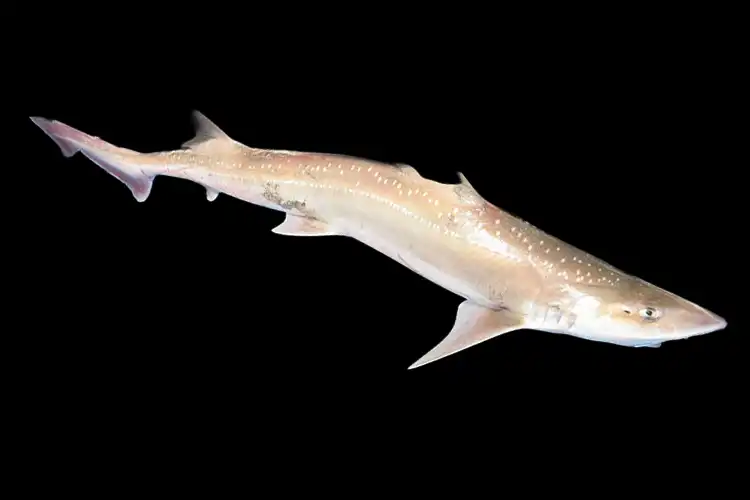
A new study has documented what is thought to be the first case of sound production by a species of shark, after scientists observed specimens of spotted estuary smoothhound – Mustelus lenticulatus, also known as ‘rigs’ – emitting a series of clicks.
Although there are many species of bony fish that produce a wide range of sounds for a variety of reasons, elasmobranchs – the group of cartilaginous fish that includes sharks, rays and chimaeras – are usually thought of as silent, even though they are known to have extremely sensitive hearing.
There has been some anecdotal evidence over the years, including a study in 1970 when cownose rays in captivity were heard producing short, sharp clicks after being forcefully prodded, but most of the very limited research into the subject suggests that noises produced by elasmobranchs under observation were the result of ‘passive’ noise generation, such as crunching rocks while eating.
Evidence of active noise generation in wild stingrays was published in a 2022 paper which documented several cases of scuba divers and snorkellers independently hearing clicks generated by mangrove whiprays (Urogymnus granulatus) and cowtail stingrays (Pastinachus ater) in separate locations in Australia and Indonesia.
Further studies in 2024 found evidence of sound production in Mediterranean blonde rays (Raja brachyura), rough skate (Raja radula) and the marbled electric ray (Torpedo marmorata). To date, however, there has been no evidence of the behaviour in sharks.
Related articles
- 100 new ocean species discovered in New Zealand
- New species of shark discovered off New Zealand
- New species of chimaera discovered in New Zealand
- Best places to dive and snorkel in New Zealand
- New whale species described by New Zealand scientists
Rigs are a small, benthopelagic species of hound shark found in the coastal waters of New Zealand. Scientists involved in a shark tagging project had reported hearing juvenile rigs producing clicks in the wild, so the researchers behind the new study set out to determine what sort of noise they were making, and how they might be making it.
Ten rigs – five male and five female – were captured and placed into tanks at the Leigh Marine Laboratory at the University of Auckland. The sharks were recorded while being handled by the scientists
All ten of the rigs produced clicks while being handled, most of which were accompanied by body movements. About a quarter of the recordings were accompanied by a violent swinging of the shark’s head, while around 70 per cent happened while the shark was swinging from side to side in a more controlled manner – although the clicking did not occur consistently with the movements.
It was noted that the rigs produced more clicks in the first few seconds of being handled, but the noise died out over time. It was also observed that the sharks did not produce any noise while feeding or swimming around in their tanks, implying the noise may well be a response to a stressor.
The dental characteristics of the shark suggest the clicks are produced by a forceful snapping of the teeth, however, the research proved inconclusive.
The scientists say further studies are necessary to determine how the sounds are made, and whether or not they have any significant meaning to other creatures of the underwater world.
The study ‘Evidence of active sound production by a shark’ by Carolin Nieder, Eric Parmentier, Andrew G Jeffs and Craig Radford is published by the Royal Society under a Creative Commons License.


